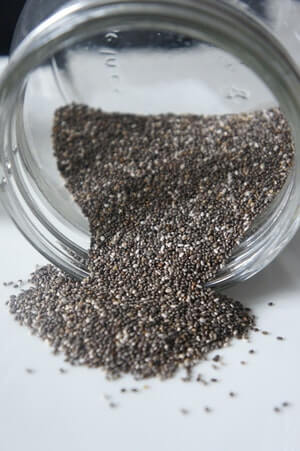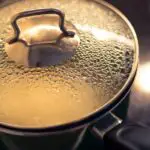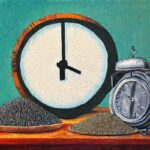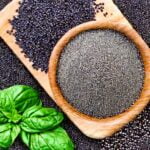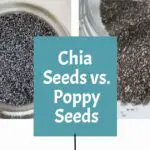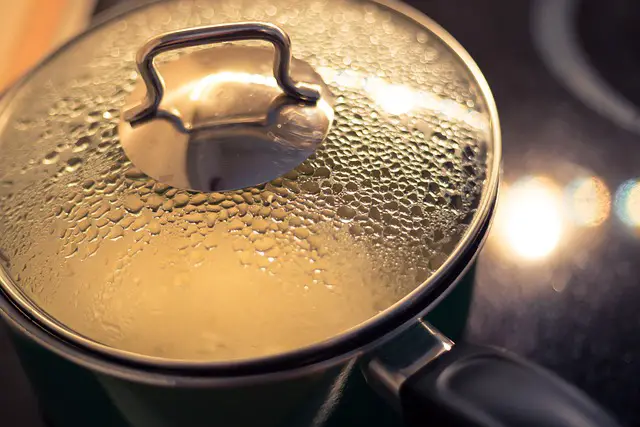
Chia seeds have experienced a surge in popularity, thanks to their ample nutritional value and diverse health benefits. Packed with fiber, protein, antioxidants, and essential fatty acids, these tiny seeds are crucial for promoting overall wellness. Yet, a common query that arises when it comes to cooking with chia seeds is whether heating destroys their nutrients.
This post will delve into the impact of heating on the nutrient content of chia seeds and what it means for their health benefits.
Contents
- Does Heat Destroy Chia Seeds?
- Can You Boil or Cook Chia Seeds with Oatmeal?
- Does Microwaving Chia Seeds Destroy Nutrients?
- Final Thoughts
Does Heat Destroy Chia Seeds?
When subjected to high temperatures during cooking, chia seeds can experience a decline in some of their nutrients. However, the extent of this decline is dependent on various factors such as the temperature, cooking time, and method utilized. For instance, a short, low-heat cooking process on a dry pan can retain most of their nutrients. But, prolonged exposure to high heat could lead to a significant loss of nutrients. (See also: Does Cooking Flax Seeds Destroy Nutrients)
One of the most heat-sensitive nutrients in chia seeds is their essential fatty acids. These fatty acids play a vital role in heart health, immune system function, and the proper functioning of the brain and eyes. Heating chia seeds can result in damage to the essential fatty acids, diminishing their beneficial properties and potentially leading to the formation of harmful compounds, such as trans fats. (Learn more at Can You Boil Chia Seeds with Oatmeal?)
It’s important to note that not all essential fatty acids react equally to heat. Omega-3 fatty acids, for instance, are relatively stable when exposed to heat and are less likely to be damaged. On the other hand, Omega-6 fatty acids are more prone to heat damage and could potentially be lost to a greater degree.
Another nutrient that can be impacted by heating is protein. Chia seeds are a rich source of plant-based protein and are commonly used as a protein supplement. However, when heated, the protein in chia seeds can become denatured, altering its structure and changing its function, leading to a reduction in its nutritional value.
To preserve their nutrient content and maximize their health benefits, it’s best to cook chia seeds over low to medium heat for a brief period. Another option is the preferred method of either soaking or grinding chia seeds instead of cooking them.
Although some nutrient loss can occur during cooking, chia seeds remain a nutritious food option. They are a great source of fiber, essential for promoting digestive health and regulating blood sugar levels. The fiber content of chia seeds is not significantly impacted by heating, meaning that they can still provide the same benefits to the body.
Chia seeds are also an excellent source of antioxidants, which defend the body against damage from free radicals. Antioxidants play a crucial role in preventing chronic diseases such as cancer and heart disease and promoting overall health. Although some antioxidant activity may be lost during cooking, chia seeds still provide a substantial amount of antioxidants to the body.
Can You Boil or Cook Chia Seeds with Oatmeal?
Yes, you can definitely boil chia seeds in oatmeal for a nutritious boost. Chia seeds are not just any ordinary seed, they’re a powerhouse of fiber, protein, and healthy omega-3 fatty acids. (However, we’ll discuss in a little bit some better options than boiling the chia seeds in the oatmeal)
One approach to incorporating chia seeds in your oatmeal is by mixing them in directly with the oats and liquid, such as water or milk, before cooking on the stovetop. This allows the seeds to absorb some liquid and become swollen, resulting in a gel-like texture. (You can find an easy method and recipe at Can I Cook Chia Seeds with Oatmeal)
Alternatively, you can pre-soak the chia seeds in the liquid for a few minutes before combining with the oats and cooking. This will make sure the seeds are evenly distributed and properly hydrated.
However, since we already discussed that heating chia seeds can potentially destroy nutrients, there are some other preferred methods to cooking the chia seeds with the oatmeal. Both of these first two methods will also increase the digestibility of the chia seeds.
First, you can soak the chia seeds in water first. Once they have set for a couple of hours or overnight, you can then add them to the already cooked oatmeal. (See How to Soak Chia Seeds in Water)
Another option is to grind your chia seeds instead of soaking them. Then you can add the ground chia seed powder into your already cooked oatmeal, or just sprinkle it on top. (See Ground Chia Seeds vs. Whole – Which is Better?)
The benefits of these methods is that soaking and grinding chia seeds increases their nutrient absorption, making them healthier.
A final option, which is an easier method, would be to just sprinkle or mix raw chia seeds into the already cooked oatmeal. However, this is not as beneficial as the other two methods, but you will still get some of the benefits of the chia seeds.
If you do decide to boil chia seeds with your oatmeal, there’s no strict rule for the ratio of chia seeds to liquid, but a good starting point is to use 1 part chia seeds to 4 parts liquid. You can always adjust this to your preference. However, keep in mind that a higher chia seed to liquid ratio will produce a thicker, gel-like texture while a lower ratio will result in a runnier consistency.
Incorporating chia seeds into your oatmeal can elevate the flavor and nutrition of your breakfast. Experiment with different ratios and methods to discover your perfect balance of flavor and texture.
Does Microwaving Chia Seeds Destroy Nutrients?
When it comes to the preparation of chia seeds, microwaving is a widespread option. However, there are conflicting views on whether or not it affects the nutrient content.
Chia seeds are loaded with important nutrients such as fiber, protein, Omega-3 fatty acids, calcium, iron, and antioxidants. However, when subjected to high heat, some of these nutrients can be diminished, including antioxidants, vitamins and enzymes.
For a quick and convenient way to prepare chia seeds, microwaving for a brief moment at a low power level is not likely to have a major impact on the nutrient content. But prolonged exposure to high heat or repetitive microwaving could result in more significant nutrient loss.
In general, methods that rapidly expose food to high heat, like stir-frying or sauteing, tend to preserve more nutrients than methods like boiling or baking which involve long-term heat exposure.
In conclusion, while microwaving chia seeds offers ease of preparation, it’s crucial to be cautious of cooking time and power level to minimize nutrient loss. To maximize nutrient preservation, alternative cooking methods such as grinding or soaking the chia seeds overnight can be considered.
Final Thoughts
In conclusion, while heating chia seeds doesn’t completely destroy their nutrients, some nutrient loss can occur, particularly for essential fatty acids and protein. Nonetheless, chia seeds remain a nutritious food option, providing fiber, antioxidants, and other vital nutrients to the body.
To preserve their nutrient content and maximize their health benefits, it’s best to cook chia seeds over low to medium heat for a brief period. Another option is the preferred method of either soaking or grinding chia seeds instead of cooking them.
As with all foods, it’s essential to maintain a balanced and diverse diet to ensure you’re getting all the nutrients your body needs. Chia seeds are a nutritious option, but they are just one piece of the puzzle. To maintain optimal health, include a variety of other healthy plant-based foods in your diet.
Lance has been passionate about the plant-based diet and we have been following a whole food plant-based diet for over 5 years. We focus on health, natural healing, weight management, animal rights, and the health of the planet and environment by focusing on whole plant-based foods and sustainable practices.
Learn more at the About Me page and follow on social media at the links below.

